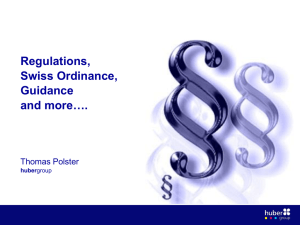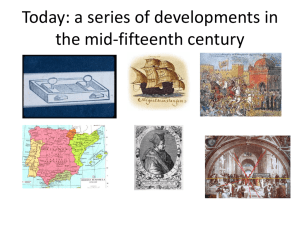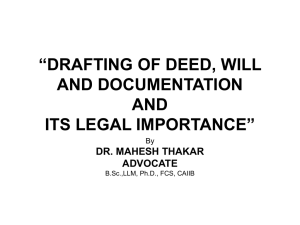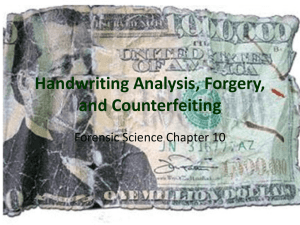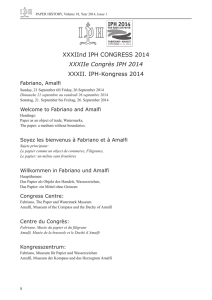Document Security: Wikipedia
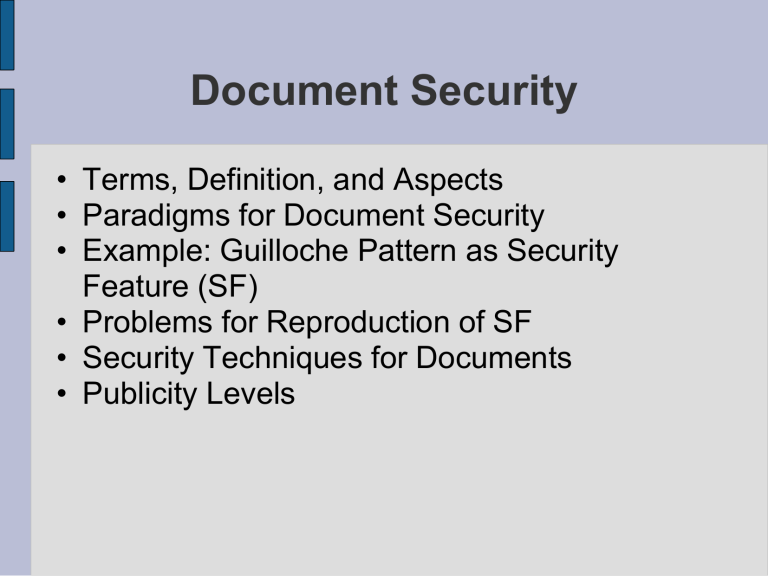
Document Security
• Terms, Definition, and Aspects
• Paradigms for Document Security
• Example: Guilloche Pattern as Security
Feature (SF)
• Problems for Reproduction of SF
• Security Techniques for Documents
• Publicity Levels
Document Security: Wikipedia
A document contains information. It often refers to an actual product of writing or recording and is usually intended to communicate or store collections of data. Documents are often the focus and concern of business administration and government administration. The word is also used as a verb as "documenting" describes the process of making a document.
The term document may be applied to any discrete representation of meaning, but usually it refers to something physical like one or more printed pages, or to a "virtual" document in electronic (digital) format.
Documents: Aspects
Types of documents: paper-based, electronic
More general: media
Documents have content, layout, mark-up
Electronic2paper: printing, but paper2electronic: pattern recognition
Security documents are a subclass of documents (like travel documents, application forms, personal documents)
Authentication vs. Authorization
Document security applies to more media than “just” documents...
Also documents...
• packings of products (software box, drugs)
• coins
• stamps
• logfiles of server
Terms
Creating a new false document from scratch: a forgery
Modifying an existing one: to tamper
Imitating a brand product: to fake , a fraud
By-passing a security means: deception , to deceive
Attempt to by-pass a security means is usually called an attack , or more friendly a counterfeit
Document Security: Means
Security printing techniques
Cryptography
Security procedures
Biometrics (esp. handwriting examination)
Public awareness, law enforcement
Main paradigms of (traditional) document security
•
Effort contest : Make the effort for producing a forgery higher than the benefit of making such a forgery.
•
Personalization: Attach unique features for a class of documents, or even single documents.
•
Publicity: Make security features partially known to the public.
Guilloche Patterns
• initially an engraving technique, known use since 17 th century
• named after French engineer
Guillot
• most common security pattern, usually associated with “official documents” (e.g. nearly each banknote in the world has such patterns)
Formerly: Guilloche Machines
Today: Guilloche Software example: Excentro for MacOS...
Guilloche: Basic Principle
Guilloche: Why is it secure?
• protection against copying: problems are color gamut, half-toning, multi-chip cameras, geometric distortions (explained next)
• protection against re-origination: many parameters, “secret” formula
• specific protections: in practice, there are often two overlapping Guilloche patterns used (darker and lighter), so a copy device cannot sense contrast in both parts with sufficient accurracy
• “social” protection: by producer agreement, each color copier will refuse to copy banknotes
Problem 1: Color Gamut
Typical technical devices
(printer, scanner, monitor, copier, camera) can only cover part of the spectrum of colors, which can be perceived by the human eye. This part is called gamut of the device.
For example, a printer can print a color, which cannot be sensed by the CCD-line camera of a scanner.
Problem 2: Half-Toning
Printer can only place single points on paper. So-called dithering algorithms (there are many) convert gayscale information into a point raster.
Problem 3: Multi-Chip Cameras
A normal (CCD or CMOS) camera chip can only sense intensities of light (by collecting over some period). Thus, for each color channel (red, green, blue) there has to be a separate chip.
In a scanner’s camera, the elements for different colors are placed next to each other
(like RGBRGBRGB...), so there is always a small offset between the color information.
Algorithms like Bayer Filter can combine this information into color information for each pixel.
However, the fine lines and details of a Guilloche pattern cannot be compensated by such methods.
Problem 4: Geometric distortions
All problems together...
Part of original DM100 banknote, and two attempts to make a copy.
Main paradigms of (traditional) document security - Repeated
•
Effort contest: Make the effort for producing a forgery higher than the benefit of making such a forgery.
•
Personalization : Attach unique features for a class of documents, or even single documents.
•
Publicity: Make security features partially known to the public.
Security Printing Techniques
Main categories of security features:
• substrate-based security
• special printing inks and techniques
• security pattern based
• diffusion-based security features
• interference-based security features
Substrate-based SF
• watermarks
•chemical reactants
•mechanical (feel)
•fluorescence
•tints
•security fibers
•planchets
•perforation
Substrate-based SF
•watermarks
•chemical reactants
•mechanical (feel)
•fluorescence
•tints
• security fibers
•planchets
•perforation
Substrate-based SF
•watermarks
•chemical reactants
•mechanical (feel)
•fluorescence
•tints
•security fibers
•planchets
• perforation
Special Printing Inks and
Techniques
• photosensitive inks
•thermochromatic inks
•metameric inks
•iridescent inks
•magnetic inks
•intaglio print
Special Printing Inks and
Techniques
•photosensitive inks
•thermochromatic inks
•metameric inks
•iridescent inks
•magnetic inks
•intaglio print
Special Printing Inks and
Techniques
•photosensitive inks
•thermochromatic inks
•metameric inks
•iridescent inks
• magnetic inks
•intaglio print
Special Printing Inks and
Techniques
•photosensitive inks
•thermochromatic inks
•metameric inks
•iridescent inks
•magnetic inks
• intaglio print
Security Patterns
•Guilloche
• Microprint
•See-through register
•Latent images
•Scan traps
•Covert watermarks
Microprint, and scan-copy
Security Patterns
•Guilloche
•Microprint
•See-through register
•Latent images
• Scan traps
•Covert watermarks
Security Patterns
•Guilloche
•Microprint
•See-through register
•Latent images
• Scan traps
•Covert watermarks
Diffraction-based SF also named OVD (optically variable device)
• gold foil
•hologram
•kinegram
Diffraction-based SF also named OVD (optically variable device)
•gold foil
• hologram
•kinegram
Diffraction-based SF also named OVD (optically variable device)
•gold foil
•hologram
• kinegram
Interference-based SF
• optically-variable ink (OVI)
•hologram overlay
•Lippmann photo
Interference-based SF
•optically-variable ink (OVI)
• hologram overlay
•Lippmann photo
Interference-based SF
•optically-variable ink (OVI)
•hologram overlay
• Lippmann photo
Lippmann photo: Technique for taking a photo and inverted photo at the same time.
More information:
Rudolf L. van Renesse
“Optical Document Security” (3 rd Edition)
Artech House Boston, London
Main paradigms of (traditional) document security - Repeated
•
Effort contest: Make the effort for producing a forgery higher than the benefit of making such a forgery.
•
Personalization: Attach unique features for a class of documents, or even single documents.
•
Publicity : Make security features partially known to the public.
Publicity Levels
1. Class: Security features are distributed about public channels (media, internet, hand-out)
2. Class: Security features are only known to trained personal, but nevertheless they are no general secret
3. Class: Security features are only known to a small group, and its distribution may be even illegal.
1000 Yen Banknote
Source http://www.boj.or.jp/en/type/release/zuiji/kako03/bnnew3.htm
1000 Yen Banknote
Security Features (1)
(1) Latent pearl image
A security feature unique to the new
1,000 yen note. When the banknote is tilted, you can see (1) the Japanese characters meaning "1,000 yen" printed with pearl ink, and (2) the number "1000" as a latent image.
Security Features (2)
(2) Watermark-bar-pattern
When the banknote is held up to the light, a vertical watermark bar (three bars for the 10,000 yen note, two for the 5,000 yen note) becomes visible.
This feature is more difficult to reproduce with personal computers or color copiers than the traditional watermark.
Security Features (3)
(3) Latent image
When the banknote is viewed from a certain angle, the word "NIPPON"
("Japan" in Japanese) appears on the top right of the back side.
Security Features (4)
(4) Pearl ink
When viewed from different angles, a semi-transparent pattern printed with pink pearl ink appears in the blank areas of the left and right margins of the front of the note.
Security Features (5)
(5) Microprinting
Like notes issued since December 1,
1993 (with serial numbers in brown or dark green), the new 1,000 yen note has the words "NIPPON GINKO"
("Bank of Japan" in Japanese) printed in micro letters. Some of the micro letters are made even smaller on the new note than those on the current note. Also, micro letters of different sizes are included in the background design.
(6) Luminescent ink
As in notes issued since December 1,
1993 (with serial numbers in brown or dark green), the Governor's seal on the front side glows orange under ultraviolet light. Likewise, some parts of the background pattern fluoresce yellowish-green.
Security Features (7)
(7) Intaglio printing
Raised printing is used for some features of the new note. The ink on the new note is raised higher than the ink on the current note.
Security Features (8)
(8) Tactile marks (intaglio printing)
To assist the visually impaired in detecting the note by touch, a recognition symbol with a rougher texture, printed intaglio, is adopted instead of the watermark symbols used for the current note.
Undocumented Features

